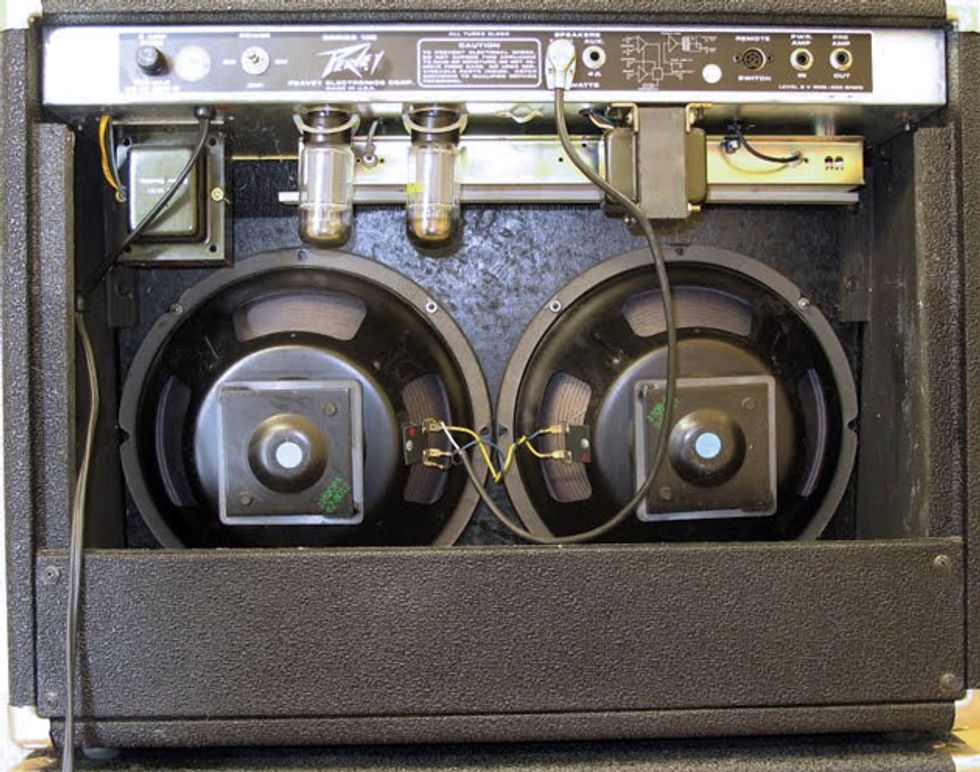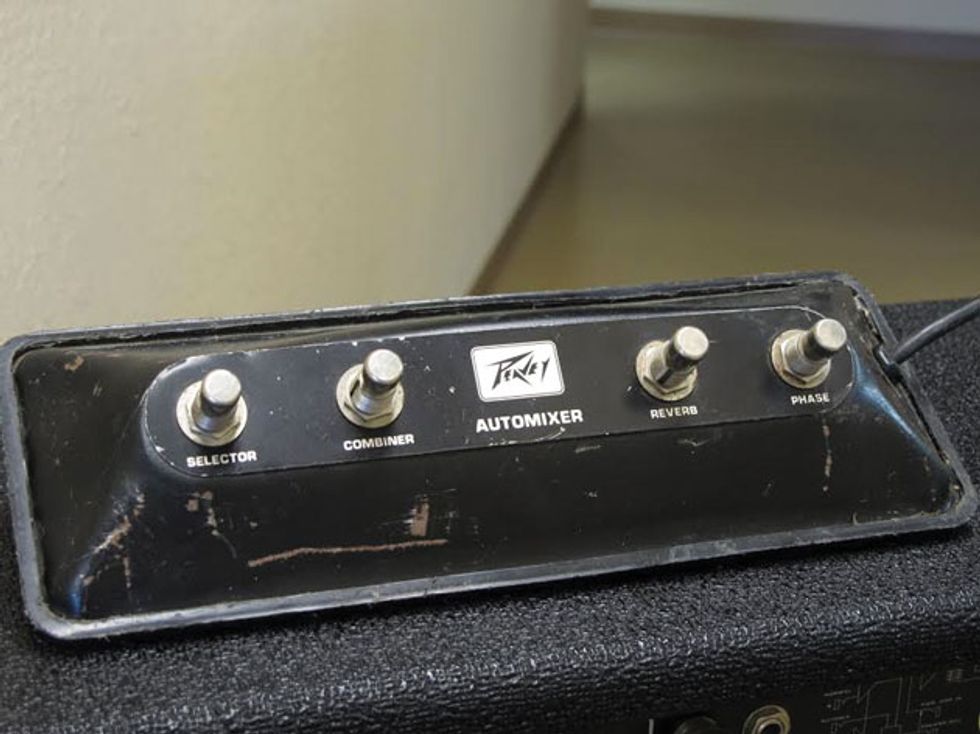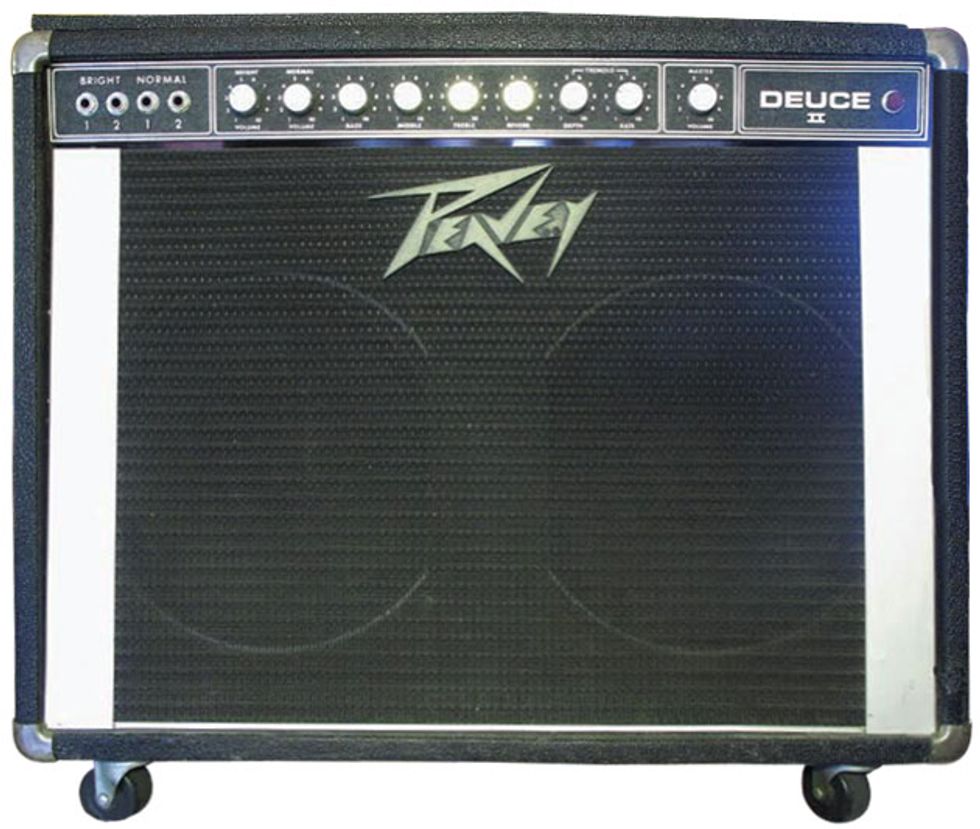What would you think about doing a column on two vintage Peavey combos? I've got a ’74 Deuce II and a 1980 Classic; pics of both attached.
The Deuce II, as I recall (it’s been a while since I plugged it in), craps outas you play a note. As soon as you play a note with a bit of volume, it’s as if somebody jerks the volume down as the initial transient spike hits the circuitry.
The amp has the upgraded Scorpion speakers, so if the electrical issues can be fixed, it should be a decent amp. I picked it up at Guitar Center for a stompbox price.
Best,
Tom in Florida
Hi Tom,
Thanks for your question. For the most part, because tube amps are my forte, I tend to stay away from questions about amps that aren’t completely tube. There are, however, a couple of hybrid amps that became popular mainstays in the music industry during the ’70s—namely those by Music Man and Peavey. I suppose the fact that these amps are 40-plus-or-minus years old could qualify them to be considered “vintage.” But they’re probably not held in the same regard in most players’ minds.
A close inspection of the rubber-stamped numbers on the back of the Eminence speakers in this Peavey Classic reveals “67,” indicating that these are among the company’s early OEM offerings.
The impetus behind Leo Fender’s Music Man amps was probably to make something better or newer than his prior endeavors, while Hartley Peavey’s was to make something more affordable. And, of course, both had their endorsers. There were the classic advertising pictures of Eric Clapton in front of his stacks of Music Man amps and, later, Johnny Winter was seen blazing through them. And who could forget the wall of white Peavey stacks behind the three-guitar assault of Lynyrd Skynyrd.
These players have moved on, in one way or another, but both amplifier brands remain and have stood the test of time. Although certainly not a benchmark of tone, these amps delivered affordable reliability. Looking at the speakers in your Classic, we can discern by the “67” in the rubber stamped numbers that they are very early Eminence products. Today Eminence is a large and respected speaker company with many stellar offerings, but back then it was more of an OEM supplier, making cost-effective speakers for the industry. Prior to selling its own speakers, Eminence more than likely would have been the least costly option.
Finding a footswitch, like this Peavey Automixer, still accompanying its original amplifier is like turning up a four-leaf clover. Especially if it still works.
Another thing I noticed exclusively in Peavey amps was the transformer mounting. Most transformers have four tabs that are formed as part of the end bell of the transformer. These tabs can break from the weight of the transformer in severe conditions … like dropping the amp off the back of a truck! To alleviate this, some manufacturers, such as Marshall, added an additional set of thick steel brackets, clamped on with long screws, to assist in mounting so that the tabs would not bend or shear. This, of course, not only added to the reliability of the amp, but the cost. Peavey’s answer was to weld a steel plate to the bottom of the transformer and mount the plate to the chassis. Sounds like a great idea on the surface, but I always wondered why this configuration didn’t generate what are known as eddy currents, which cause core losses and reduction of efficiency, in the transformer. (It’s complicated to explain, but this is why the screws that hold transformers intact need to be isolated from the iron using insulating washers.) Maybe this is why other manufacturers didn’t follow suit? But I assume it wasn’t a major concern to Peavey. All things considered, I guess if you asked me for one word that would describe the characteristics of these Peavey-era amps, I would say: workhorse. That said, you’re having some issues with yours, so let me give you a few suggestions to extend their lives.
First, I suggest cleaning all the pots and jacks. This can go a long way to improving the tone and reliability of amps. It’s especially critical for the Pre Amp Out and Power Amp In jacks, as an intermittent connection of the switching contacts in these jacks could be the cause of your issue. For the pots, spray some electronic cleaner with lubricant into the open space on the body of the pot (This will be on the bottom of the pot in most circuit-board-mounted pots.) and rotate the control eight to 10 times. For the jacks, spray the same cleaner on the internal parts of the jack and cycle a plug in and out of the jack eight to 10 times.
While the Peavey Deuce II’s name seems redundant, the Deuce line found its way into the backline of respectable players, including Dire Straits’ Mark Knopfler.
This should remove dirt and oxidation from the contacts in the jacks. Next, clean the output tube sockets using some electronics cleaner without lubricant. Simply remove a tube, spray some cleaner in the socket, and cycle the tube in and out eight to 10 times. (The magic number!) These simple steps may cure the problem and help keep the amp in good operating condition. Of course, new tubes couldn’t hurt!
Next, while I’m a big proponent of “if it ain’t broke, don’t break it,” and quite often am against replacing filter caps in vintage amps simply based on their age, I would say replacing them in these amps probably couldn’t hurt. There are both high- and low-voltage power supplies in these amps, and replacing the caps with a better grade of modern filter cap may help lower any background noise present in the amp.
There’s one more thing you might want to consider. If you really want to go this far, replace the input op-amp. If the amp utilizes RC4558s or MC1458s, you could upgrade by replacing those with a TL072 op-amp. They are a newer yet compatible op-amp with a lower noise floor. I’ve heard, although I don’t know that I subscribe to this, that Johnny Winter would occasionally have the op-amps in his Music Man amps replaced because he thought they sounded better afterwards. Personally I don’t think tubes and op-amps have that in common, but hey, if it makes the player happier …
I hope that helps preserve your Peaveys.











![Rig Rundown: Russian Circles’ Mike Sullivan [2025]](https://www.premierguitar.com/media-library/youtube.jpg?id=62303631&width=1245&height=700&quality=70&coordinates=0%2C0%2C0%2C0)

















